How Deep Should You Till A Garden
Tilling your garden is a basic garden chore that a surprising number of people aren't doing right.
Not only do well-meaning gardeners till during wet weather or when the soil has been overworked, but the wrong technique can make your soil less healthy for plants!
Done right, tilling improves your soil, preparing it for planting. It helps with weed control and eliminating pests, and it lets you mix amendments into the earth.
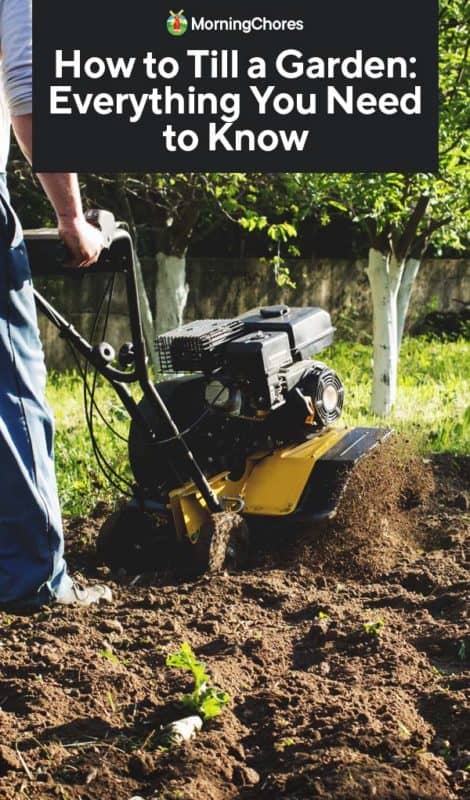
Plowing Versus Tilling Versus Cultivating
People often use the terms plowing, tilling, and cultivating interchangeably. They are, in fact, separate processes.
Plowing
Plowing is turning over the sod. Gardeners often use a plow attached to a tractor to flip the earth over like a big dirt pancake.
A plow gets deep and can go 20 inches into the soil, though most people plow to about one foot. The average gardener doesn't have to plow often. Usually just for starting a new garden.
Plowing is necessary if you have a large garden or if you are transitioning a field into garden space. Fields have numerous well-established plants. A plow is necessary to break them up and expose the dirt so that you can till.
Tilling
Tilling in the garden typically disturbs the soil to about eight inches deep using rotary spinning blades to turn the soil.
Cultivating
Cultivation is a broad term that can mean caring for plants. For farmers, cultivation is often used to describe hoeing or using a tiller to get rid of weeds or to mix in some fertilizer.
Cultivation typically happens in the first three inches of soil when we want to knock out weeds or add some granulated organic fertilizer.
When is the Right Time to Till?
The single most important factor to consider when tilling the garden is timing.
There are certain tasks made easier by tilling, but you also want to treat your soil as a living organism. That means striking a balance between leaving the soil undisturbed to create a healthy environment and tilling often enough to kill weeds and prep the soil.
In the Spring to Prepare the Garden
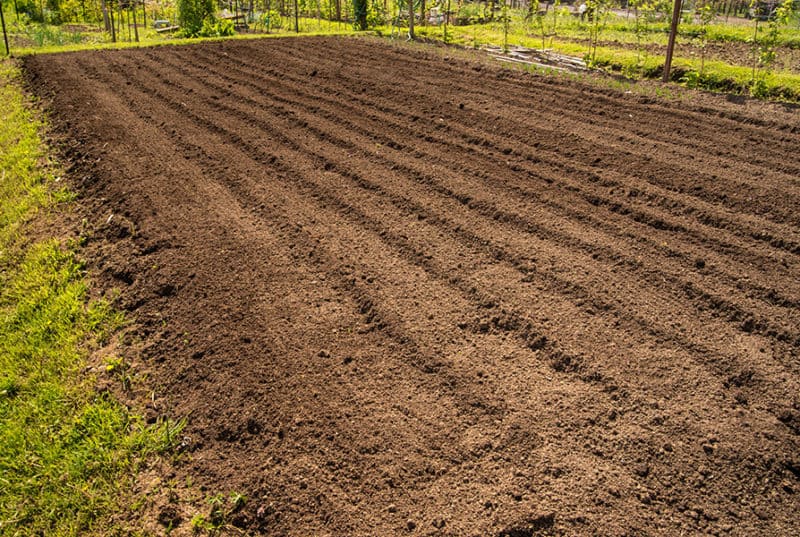
Spring is always exciting. Soon it will be time to dig in the dirt and plant seedlings. It's also an ideal time to till.
Most likely, the winter snow and rain have compacted your soil. Tilling opens the earth and allows air to circulate, which all plants appreciate.
Additionally, seedlings need loose soil so that they can spread their roots. Tilling breaks up hard clumps, so when you plant young seedlings, they have room to grow.
Many gardeners wait for the soil to be warm – at least 60°F – to start tilling. I till at the first opportunity when the earth is dry.
Before you till in the spring, take a soil test to figure out what amendments you need to add to your garden. Then, you can sprinkle them on the top of your soil before you till.
In the Fall to Put Your Garden to Bed
Till in the fall to prepare your garden for planting next year. You can till in old vegetable matter such as spent nitrogen-rich bean plants to enrich the soil. This helps you make a fast start in spring and ensures your soil is healthy enough to support your crops.
Anytime to Control Weeds
Tilling is a useful weapon when it comes to combating weeds. Tilling disrupts the growth of the plants by cutting them up and denying them a way to transport nutrients to their leaves.
Tilling can help to kill annual weeds by cutting the stems and roots, so the plants dry up and die.
Tilling can also help you manage perennial weeds. These weeds have long taproots and can quickly rejuvenate. However, tilling disrupts the growth cycle continually and stunts plants.
Use caution with weeds that reproduce by root buds, including invasive crabgrass, johnsongrass, and Canada thistle. When you till them and break up the roots, you're encouraging them to grow more plants! Hand dig them for better results.
Important Tip: Many of us till between rows during the garden season to control weeds. It's important to adjust your tine length to a shallow three or so inches when tilling weeds in between rows to prevent damaging the shallow roots of your garden plants.
All Year Long to Mix in Amendments and Compost
Plants take in nutrients from their roots. Tilling mixes the nutrients into the soil so that they're ready for the plant to take up.
Again, make sure you aren't tilling too deep and disturbing plant roots.
When Starting a New Garden
Tilling is a great way to organize your garden. Most of us till the entire garden before planting to create a blank dirt palate.
Once a space is tilled, it's easy to break it up into sections for planting. That way, you can more easily create raised beds or plant in traditional rows.
This also makes it easy to rotate your crops, which is essential for preventing plant diseases.
When Not To Till
There are lots of times when tilling is the right move, but then there are other times when you shouldn't be breaking up the soil.
During Wet Weather
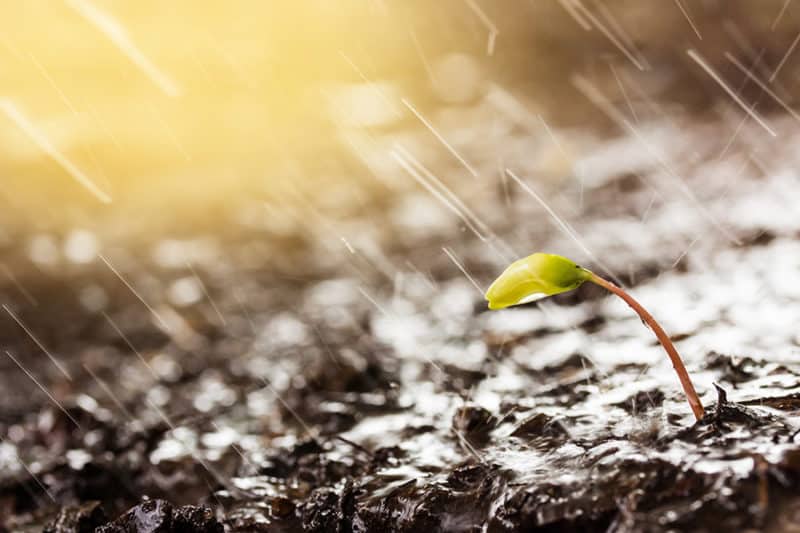
Never till in wet weather, especially if you have any clay content in your soil. Moist soil won't loosen up; it'll clump instead.
Those clumps are what you're trying to avoid.
To make sure your soil is dry enough, take a trowel and dig down 4-5 inches. Feel the earth and check for moisture. Roll some soil around in your hand. Is it loose and dry, or does it clump together?
When the Soil Has Been Overworked
You can overwork your soil. Too much tilling can create a hardpan, which is soil compaction just below the depth of your tiller. That means if you're tilling to ten inches down, at 11 inches, the soil becomes hard and not easy to penetrate.
This causes two problems. First, your bigger plants won't be able to send their roots down because they'll hit the compacted soil and stop, which can lead to stunted growth.
Also, rain may not percolate through the ground well, and you could end up with soggy, waterlogged soil.
Another reason to not till too often is that it disrupts the micro and macro organisms in your soil. These living organisms do lots of good, and you want them to be happy.
Earthworms can be killed during the tilling process, and frequent tilling can lower your worm population. Worms are on your side and work as free and willing tiny tillers.
Some gardeners combine no-till gardening methods to reduce how often they work the soil.
What Kind of a Tiller Should I Use?
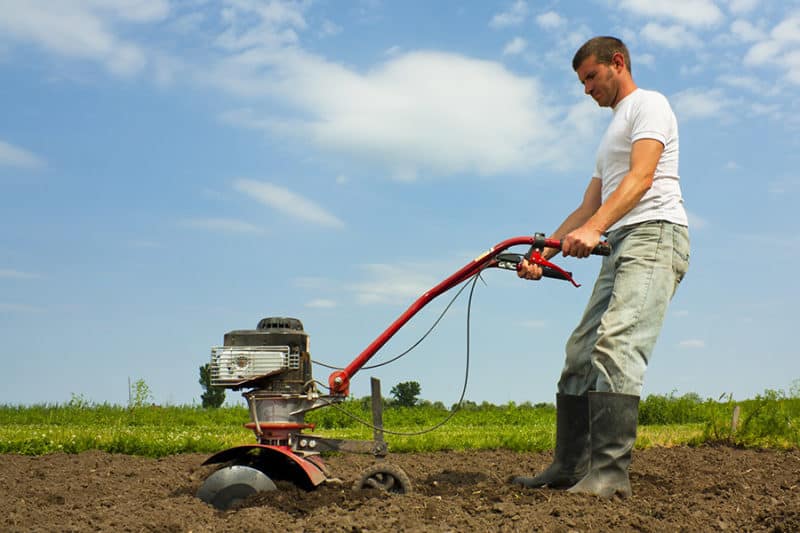
One question that gardeners often face is how big a tiller they need. Tillers are an expensive investment, so matching the size of the tiller to the garden is important.
In addition to size, you need to look at your soil type. Sandy loam is easier to till than rocky soil.
It's helpful if you can try out a tiller before you purchase one so that you can see how it fits with your body.
Gardens under 1500 square feet can be tilled with a small tiller. A mini tiller can also be used in a smaller space such as a raised bed or flower patch near the house.
Small tillers can be either manual or powered.
Gardens that range from 1500 to 5000 square feet need a tiller with at least a five horsepower engine. Medium size tillers come in front-tined and rear-tined models. The front tined ones are lighter but, in my opinion, are harder to manage.
Large gardens that are over 5000 square feet need a large tiller, with six or more horses in the engine.
How to Till the Garden
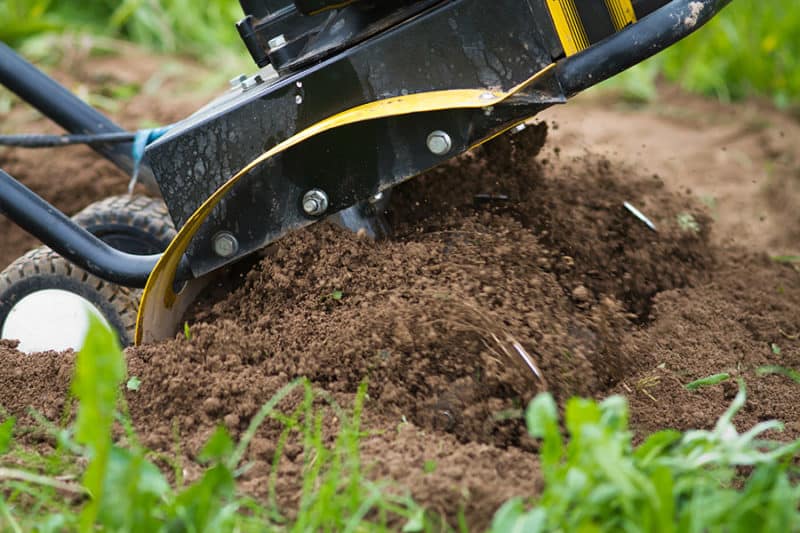
Tilling isn't that different from mowing the lawn; only you're doing it in the soil instead. Slowly push the tiller back and forth across the length of your garden.
Don't overlap the rows and don't cover the same spot twice to avoid compacting the soil.
Tips For Beginner Tillers
- Make sure your tiller is in good operating order with clean oil, fresh gas, and a new spark plug. Sharpen the blades once a year.
- If you're going to till in a lawn area, mow first to knock down vegetation.
- Mark out the area where you'll be tilling your soil.
- Start at one corner of the marked out area with your tiller.
- Slowly make your rows. Don't rush when tilling your garden. Give the machine time to break up the dirt.
- If you're tilling a new garden you may need to make two passes on each row to break through the sod layer.
- Look down and check the soil to make sure that grass and weeds are getting chopped up or amendments are going into the soil.
Become a Garden Tilling Master
Tilling has many advantages and can improve the texture of your soil. However, it's important to remember when to till to get the most benefit.
Now that you know the basics, check out our story on why tilling can be the right choice in the garden. Then, let us know if you have any tilling tips to share.
Was this article helpful?
Yes No
How Deep Should You Till A Garden
Source: https://morningchores.com/how-to-till-a-garden/
Posted by: dickersonmigge1956.blogspot.com

0 Response to "How Deep Should You Till A Garden"
Post a Comment